The purpose of this activity is to support students in learning to apply their knowledge of basic facts and place value to solve addition and subtraction problems with multiples of ten, such as 40 + 30 and 90 - 40.
- Place value materials composed of individual items grouped into tens, such as BeaNZ in film canisters, iceblock sticks bundled with rubber bands (hundreds with hair ties), or a paper form such as Place Value People. Bundled materials are important as they allow partitioning and combining without the need for “trading” tens blocks for ones, or vice versa.
- A place value board. This allows for the organisation of materials into columns and, in turn, supports calculation strategies. Three-column and four-column place value boards are available here.
The examples below include images of BeaNZ and cannisters used to physically model the numbers. You may prefer to use iceblock sticks in bundles of 10, or Place Value People. We recommend that you focus on just one of these within any given lesson.
- Pose addition problems initially with multiples of ten. Set up a physical model as shown below and record the calculation vertically.
You have 30 beans and I am going to give you 50 more beans.
How many beans do you have now?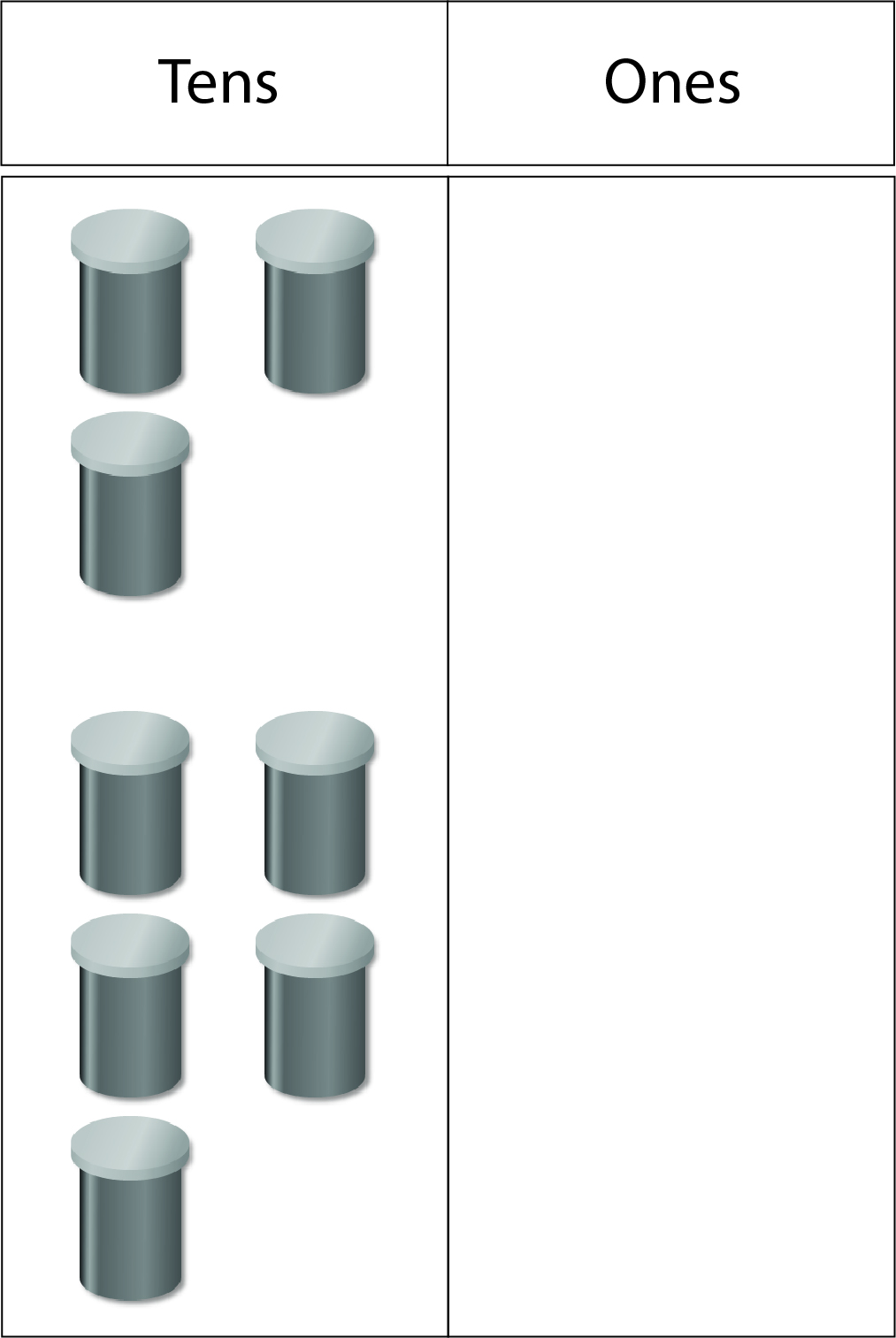
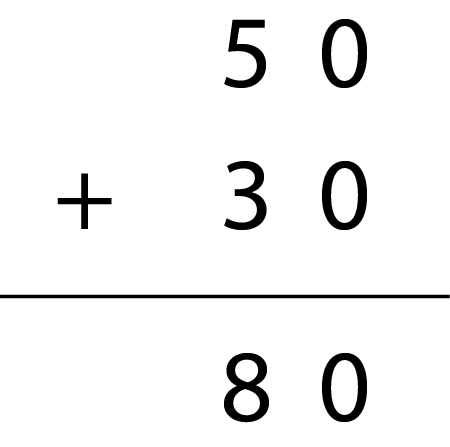
I am going to write the equation vertically. I am making sure to line up the tens and ones columns. This helps me to see how many tens and ones I am adding.
- Let students solve the problem with materials. Encourage them to verbalise their thinking with a partner, as they work, and provide time for them to share their ideas with the wider classroom. You might model this by “thinking aloud” and by asking questions focused on the structure of the multiples of ten.
For example, -ty is old English for “tens”. I know that forty is made up of four tens.
What do you notice about 30? How many tens make 30?
How many tens make 50?
If you add 30 + 50, how many tens do you have then?
- Emphasise the connection between basic facts and working with tens. For example:
I know that 3 + 5 = 8. I can make this with ones (demonstrate this with individual beans). I can use this thinking to make 30 + 50 = 80 with materials. I am going to use canisters of 10 beans and make the equation (demonstrate this with canisters of beans). The canisters of beans show me that 3 tens + 5 tens equal 8 tens.
- Use materials and written equations to further emphasise this connection. For example:
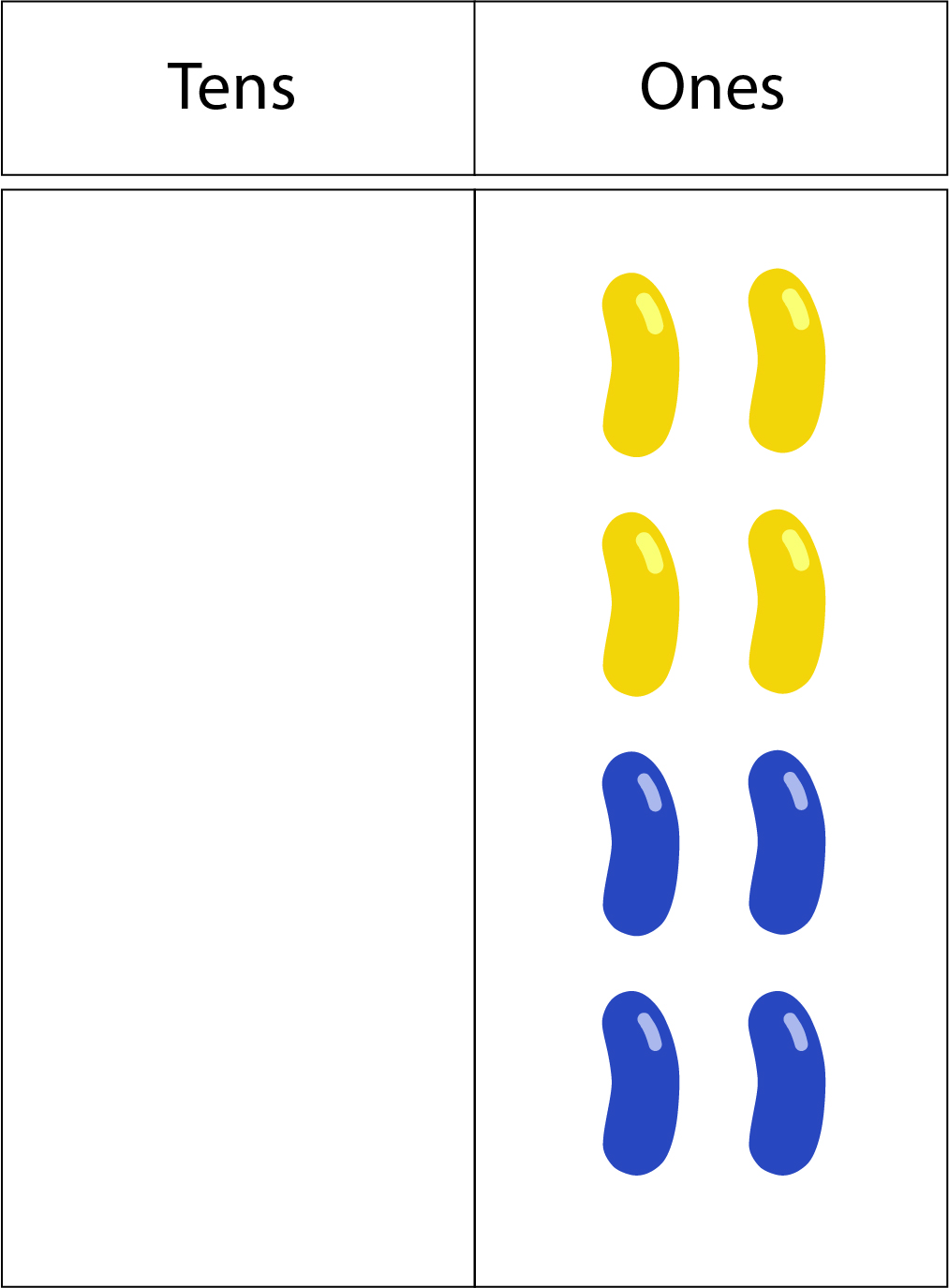
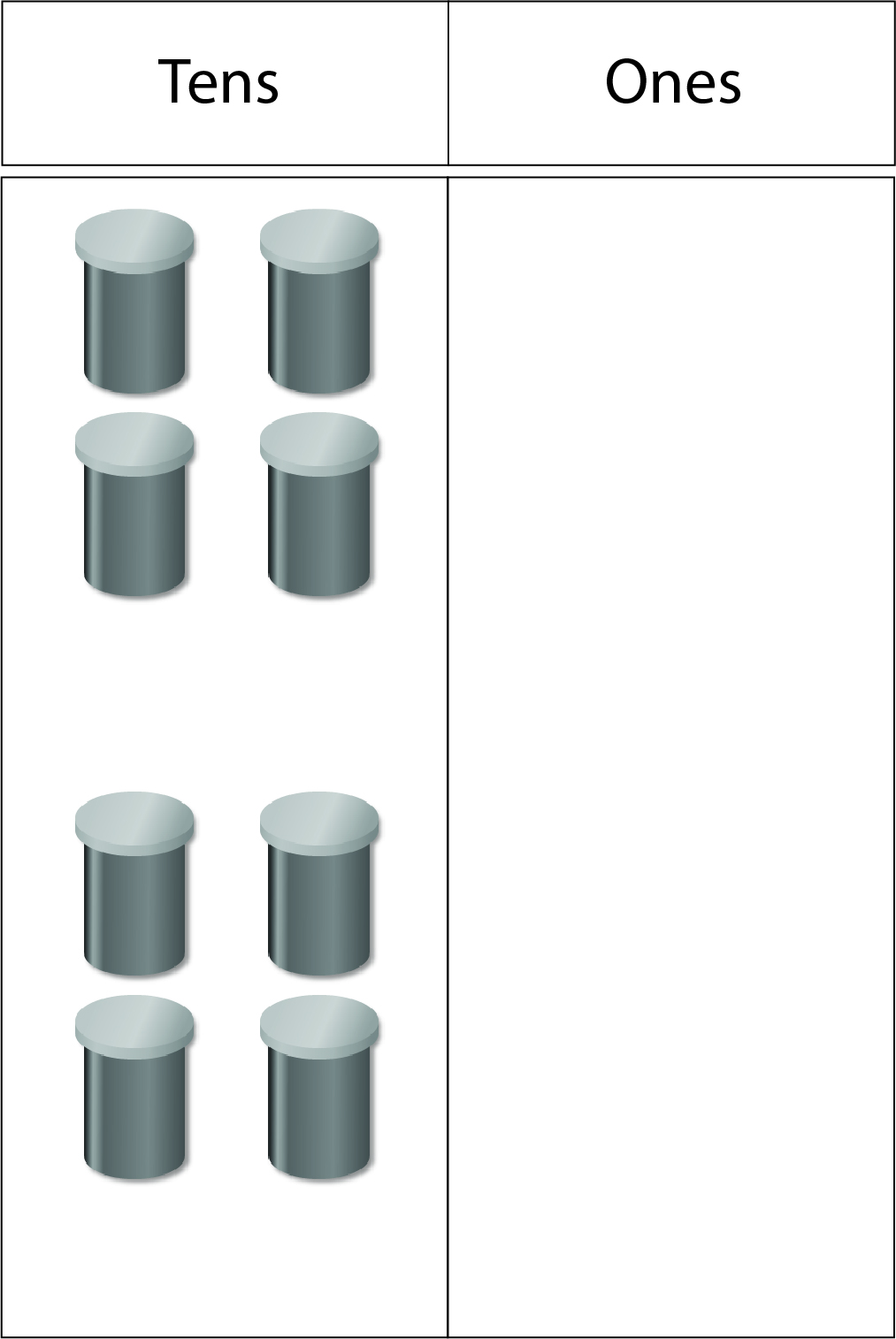
4 + 4 = 8 40 + 40 = 80
- Pose similar addition problems to encourage fluency in adding multiples of ten, before progressing to subtraction. Set up a physical model, then remove the subtracted set of beans in one movement. Record the calculation vertically.
You have 90 beans and I take away 60 of your beans.
How many beans do you have now?
I am going to write the equation vertically. I am making sure to line up the tens and ones columns. This helps me to see how many tens and ones I am subtracting.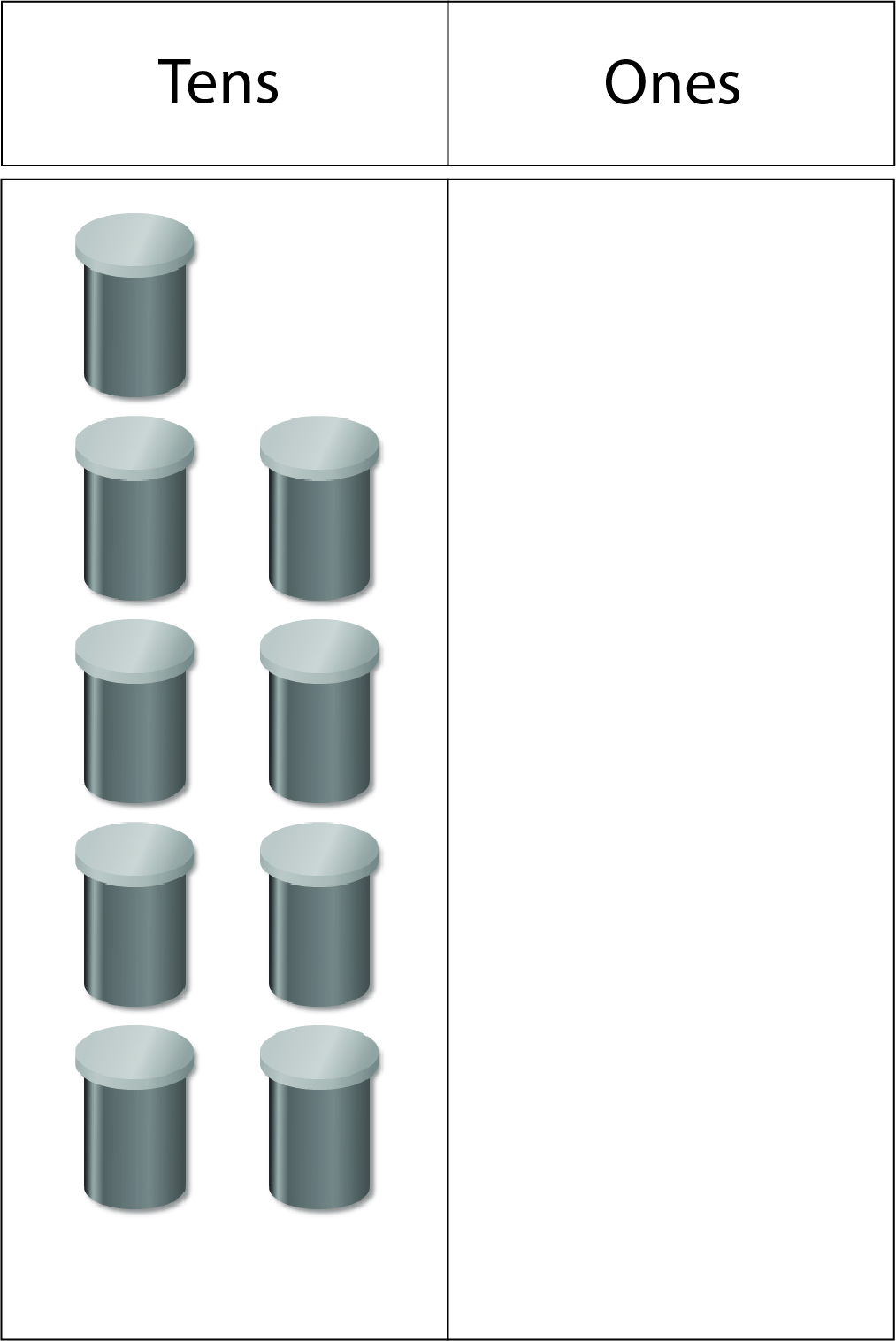
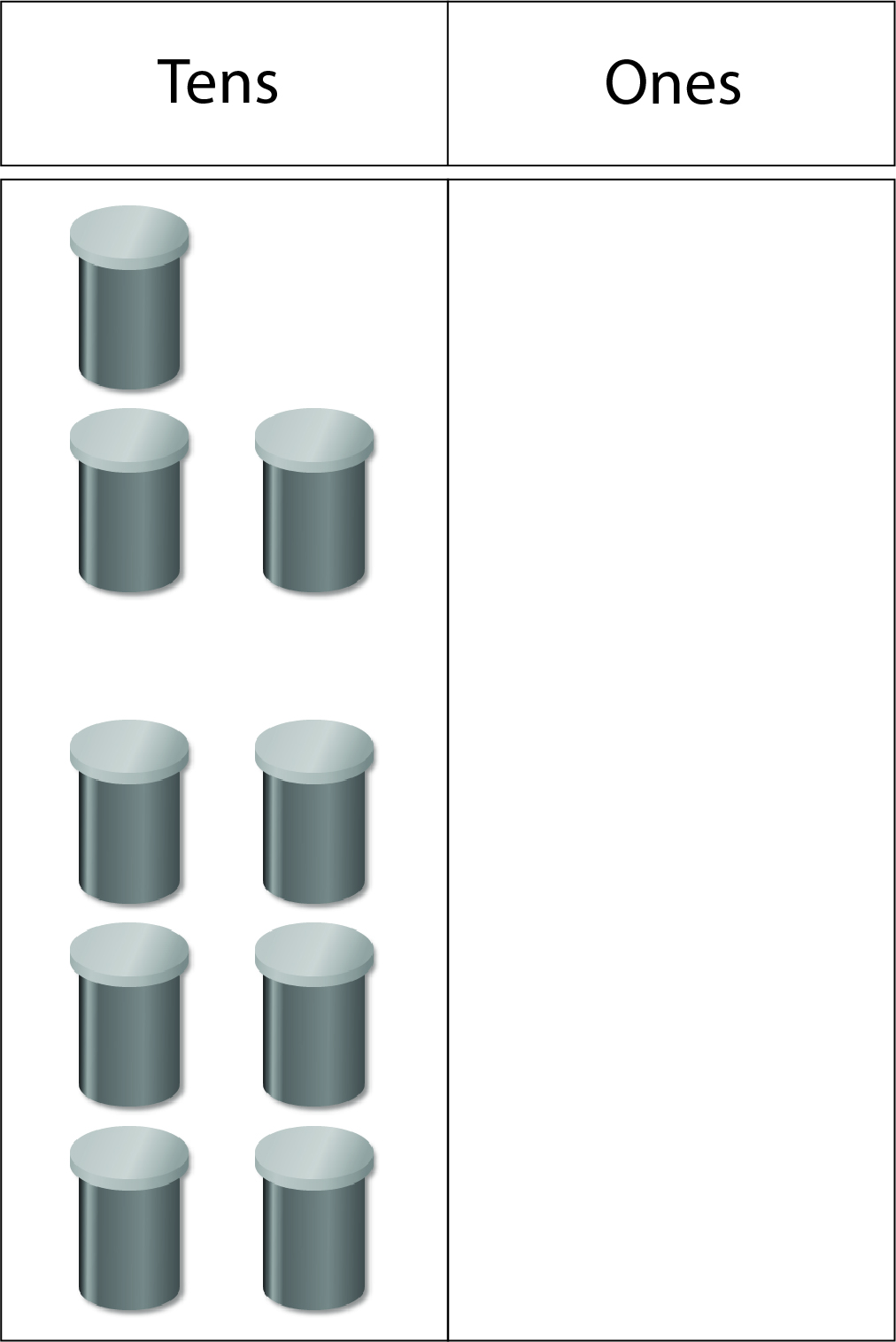
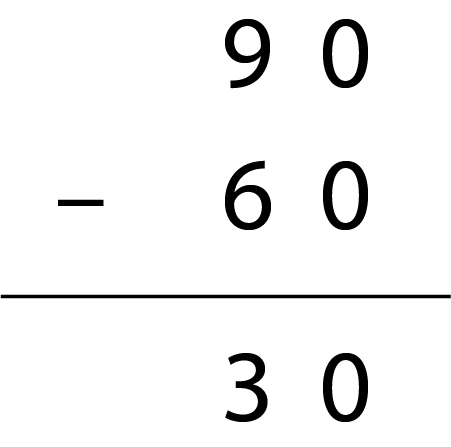
- As with addition, ask questions focused on the structure of the multiples of ten to support your students. For example:
How many tens make 90?
How many tens make 60?
If I take 6 tens from 9 tens, how many tens will you have then?
Use the materials and written equations to emphasise the connection between basic facts (9 - 6 = 3) with ones and tens (, so 9 tens - 6 tens equal 3 tens).
Next steps
- Pose relevant addition and subtraction problems set in real-world contexts. Choose realistic contexts appropriate to your students, and encourage students to relate the problem back to the equipment if necessary. For example, “30 tamariki competed in the shot put event at our athletics day, and 40 tamariki competed in the discus event. Altogether, how many tamariki competed in the events?”
- Increase the level of abstraction by covering the materials, asking anticipatory questions, and increasing the use of vertical algorithms.
- Extend the problems to include multiples of 100, leading to multiples of ten and 100.
A suggested sequence for extending the difficulty of the additions is:
- Adding multiples of ten up to 100 (e.g. 50 + 20)
- Subtracting multiples of ten within 100 (e.g. 80 – 50)
- Adding multiples of ten over 100 (e.g. 70 + 50)
- Subtracting multiples of ten starting over 100 (e.g. 130 - 40)
- Adding and subtracting multiples of 100 (e.g. 700 + 200 and 900 – 400).